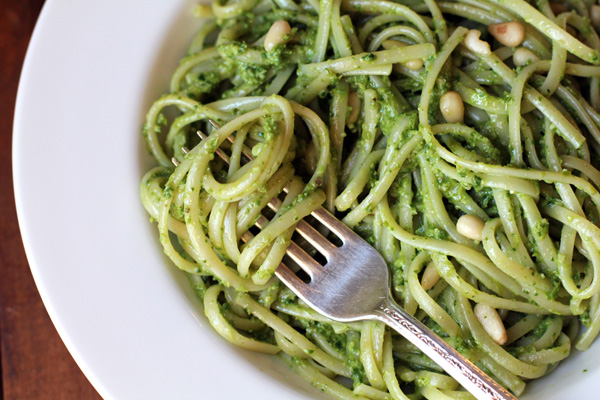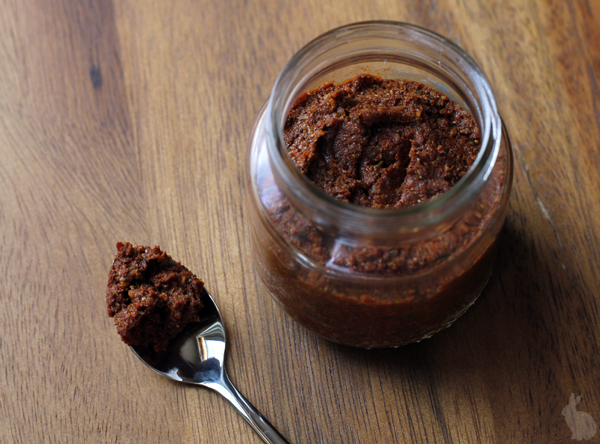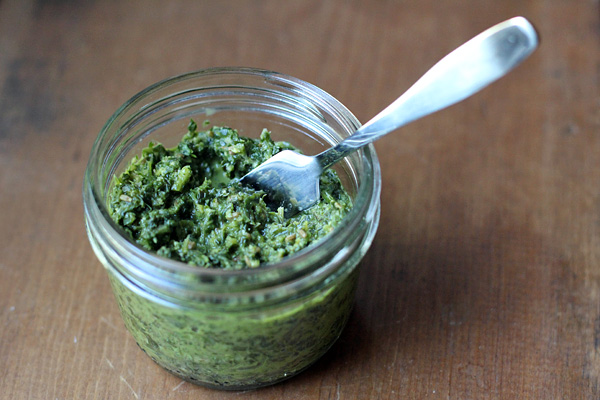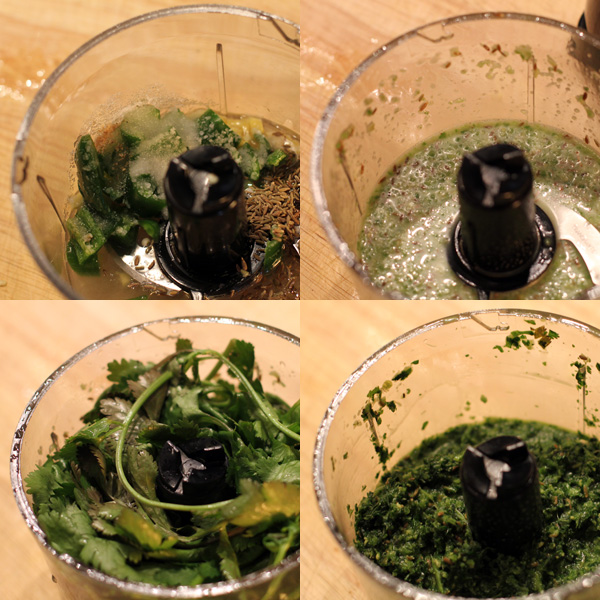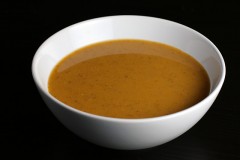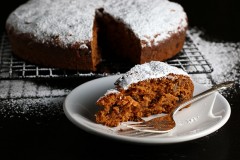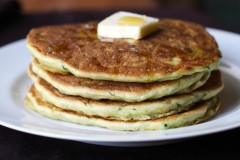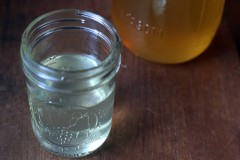I think it was the mix of vibrant sun and biting wind this past weekend that inspired me to finally do something constructive with the bag of dried hot peppers sitting in my pantry. A friend had shared her beautiful stash with me, along with a family recipe for a fantastic-sounding chili; hopefully she won’t mind the project detour I ultimately took with her ingredients.

In truth, I had been contemplating making berbere paste for years–ever since discovering a recipe for it in the pages of the World Food Cafe cookbook in 2002. It seemed so exotic! But then I’d read the long list of ingredients and find myself getting sleepy before even making it into the kitchen. So, as with overly complicated knitting projects and 1,000 piece picture puzzles, it got pushed to the back of the closet, an idea for some rainy day down the line.

A crisp, sunny day offers the perfect opportunity to visit my favorite Punjab Market in Waverly and stock up on spices.
Then a funny thing happened. I bought a small container of a spicy lentil stew from the Ethiopian stall at the Waverly Market and found my motivation: I was going to make a big pot of Yemisir Kik Wot (more on that later).
In truth, making the berbere paste is not actually difficult. It’s just a long list of spices that must be measured and toasted and ground, mixed with a paste of vinegar, onion, ginger, and garlic. After all that, you net a baby food jar’s worth of product–one that you may find yourself opening for no reason other than to breathe in its amazing aromas and dreaming of as you sleep at night.
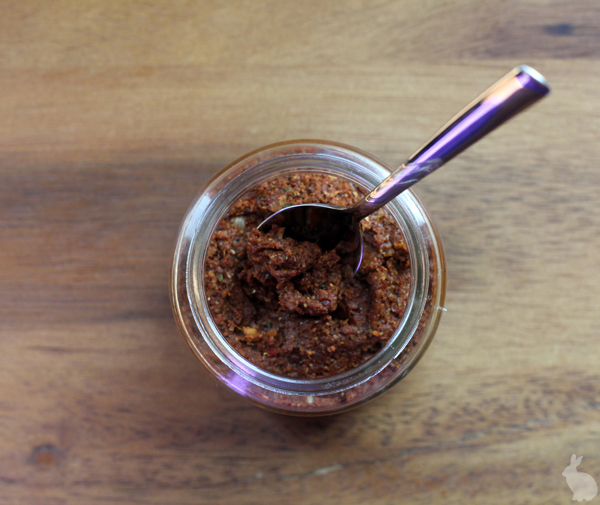
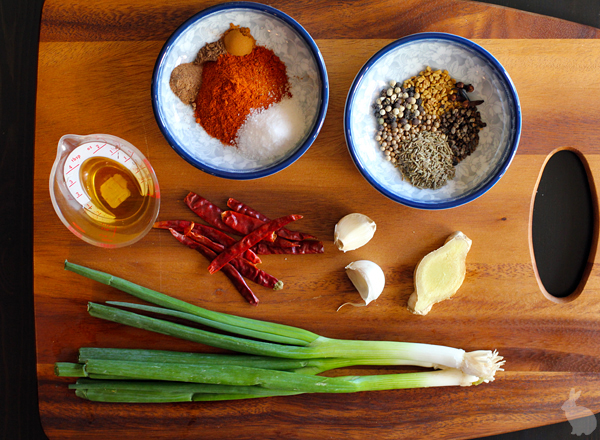
Berbere Paste
from the World Food Cafe cookbook
cookbook
2 garlic cloves, peeled and sliced
1/2 inch piece of ginger, minced
3 green onions, sliced
1 T cider vinegar
1/2 tsp. peppercorns
1/2 tsp. cardamom seeds
1/2 tsp. coriander seeds
1/2 tsp. fenugreek seeds
1 tsp. cumin seeds
4 cloves
8 dried red chili peppers
4 tsp. ground sweet paprika
1 tsp. salt
1/4 tsp. ground allspice
1/4 tsp. ground cinnamon
1/4 tsp. ground nutmeg
Measure whole spices into a bowl. Heat a dry skillet and toast them until lightly browned and fragrant. Toss frequently and take care not to burn them. Next, grind the whole spices and dried peppers finely (I use a cheap electric coffee grinder that I reserve just for this purpose). Measure the powdered spices into the mixture as well. Set aside.
Place the garlic, ginger, onions, and vinegar in the bowl of a food processor (since there is so little to mix, after some trial and error, I had much better luck using the small processor that came with my immersion blender as opposed to my powerhouse Cuisinart). Process into a paste, then add all the ground spices and continue mixing till well combined. Pack into a small glass jar with a tight-fitting lid and refrigerate until needed.
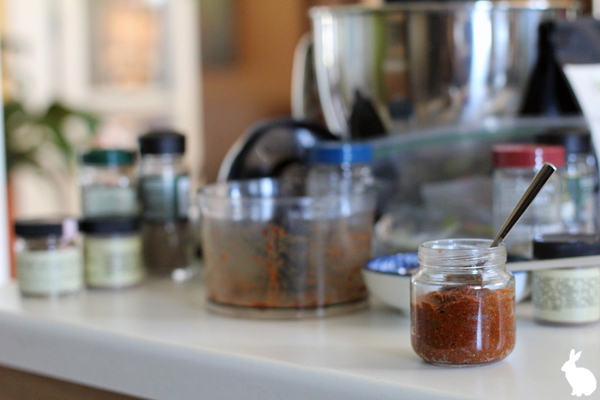
Since I had barely dented my Ziploc bag full of dried peppers and I already had every spice I own out on the counter, I decided to just keep going and try my hand at making a batch of Harissa while I was at it (plus, there was a soup using it that I’d just read about and wanted to try…convenient!). After all that berbere paste activity, this one seemed sinfully low-effort.
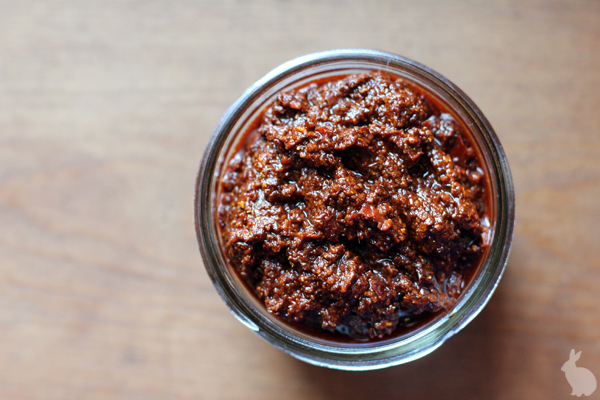
Harissa
also from the World Food Cafe cookbook
cookbook
2 oz. dried hot red chilies
2 T cumin seeds
3 T coriander seeds
4 garlic cloves
1 tsp. salt
5 T olive oil
Remove any stems or seeds from dried chilies and soak the peppers in warm water for about an hour.
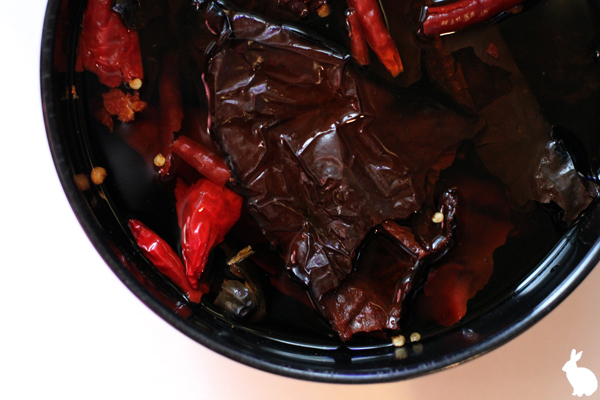
Meanwhile, measure whole spices into a bowl. Heat a dry skillet and toast them until lightly browned and fragrant. Toss frequently and take care not to burn them. Grind the whole spices finely and set aside.
Once the peppers have softened, drain and place in the bowl of a food processor. Add ground spices, garlic, and salt, and run processor until peppers break down and a paste begins to form (I had to stop and scrape down the bowl repeatedly, and even then only got half way there).
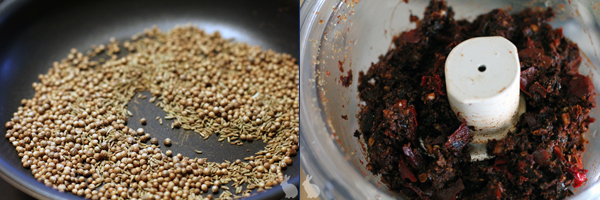
Next, with the processor running, slowly drizzle in the oil. This is where my harissa finally came together, much like a pesto. Keep processing until smooth. Pack into a glass jar with a tight-fitting lid and refrigerate until needed. Works as a condiment and in soups and stews (more on that later, as well).
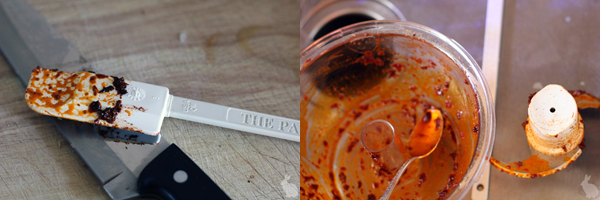
, no matter what you smear it on.

